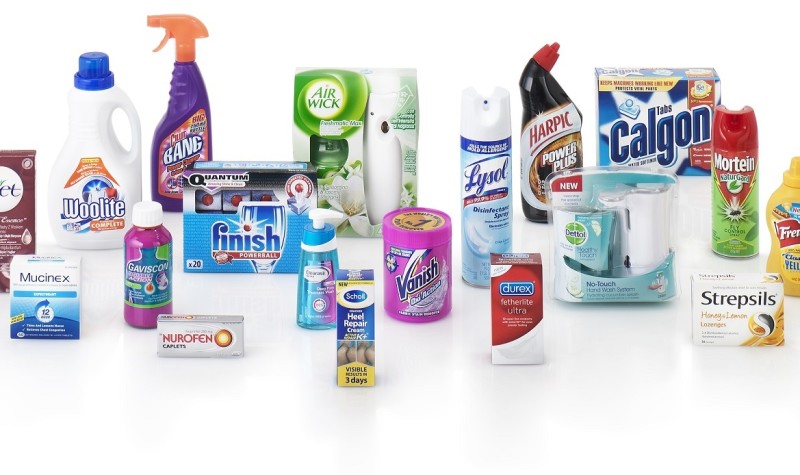Reckitt Benckiser: an undervalued business with an improving growth outlook

Robert Stephens, CFA, discusses why Reckitt Benckiser’s revised strategy could produce improving financial prospects despite the company’s recent weak performance.
Stating that a stock which trades on a price-earnings (P/E) ratio of 19 offers good value for money may sound rather dubious to some investors. Furthermore, if the stock in question recently posted a meagre 4% rise in earnings per share (EPS) in its most recent update, many investors may be dissuaded from buying it.
However, global consumer-goods company Reckitt Benckiser (RB.) could prove to be cheap relative to its sector peers. Its refreshed strategy may catalyse its financial performance following a period of slow growth. As a result, it could provide investment appeal, as it embarks on a period of major change that will ultimately more closely align its future product offering with changing consumer tastes.
A changing business
| First seen in Master Investor Magazine
Never miss an issue of Master Investor Magazine – sign-up now for free! |
Key to the company’s long-term growth prospects is a reorganisation of its operations. As part of this, it acquired infant and children’s nutrition business, Mead Johnson, for $16.6 billion in 2017 in order to enhance the growth opportunities within its consumer-health division.
Following the acquisition, Reckitt Benckiser is now in the process of creating two structurally independent business units, Health and Hygiene Home, as part of an overarching strategy called ‘RB 2.0’. Its reorganisation is expected to be completed by mid-2020, and to provide the business with a clear growth focus and greater scope to innovate.
The completion of the company’s restructuring, though, will be overseen by a new chief executive. After eight years in the role, Rakesh Kapoor stood down at the start of September 2019. He has been replaced by former PepsiCo executive Laxman Narasimhan.
A change in chief executive at a time when the company is conducting a major restructuring, which could lead to calls for a split of the business into two separate parts, may cause a degree of uncertainty. However, it has the potential to create a more profitable entity in the long run.
Growth potential
As well as strengthening its position in consumer healthcare, the acquisition of Mead Johnson also enhanced Reckitt Benckiser’s exposure to the developing world. Having generated 25% of its revenue in emerging markets in 2010, 40% of Reckitt Benckiser’s sales are now from the developing world.
This could enable it to achieve an improving growth rate, since demand for its range of health, hygiene and home-related products is likely to rise as incomes across the emerging world increase. In fact, wages in China are forecast to increase from around $1,000 per month to around $2,200 per month over the next two decades. This means that the company’s total addressable market is set to increase at a fast pace, which could enhance its growth potential.
In tandem with rising wages across the emerging world, Reckitt Benckiser is seeking to gradually increase the price points of its products through further innovation. In particular, the Hygiene Home product portfolio is becoming increasingly weighted towards the premium segment, with the company raising prices when it is able to improve its products and create a better solution for its customers. This could lead to higher sales, as well as greater margins, with premium consumer-good segments forecast to outpace value segments over the long run.
In terms of innovation, the business is investing heavily across its product portfolio. Its current product pipeline includes a new specialist surface cleaner in India, where a large proportion of consumers have cement floors, as well as smaller format varieties of its cleaning products that are expected to resonate with middle-class consumers in emerging economies. Since the business had free cash flow of £2.1 billion in its 2018 financial year, its capacity to invest in its product portfolio in order to gradually raise prices seems to be high.
Sustainable growth
Of course, consumer tastes are rapidly changing in all of the markets where the company operates. A key example of this is the ongoing pivot towards a greater focus on sustainability, and specifically in the environmental impact of the products which consumers use. For example, 87% of consumers have a more positive image of a company that supports social or environmental issues. Furthermore, 68% of millennials bought a product or service with a social or environmental benefit in the last year.
Reckitt Benckiser is investing heavily in its sustainability credentials. A key focus for the business is intertwining its brand message with sustainability, so that its brands gradually become synonymous with positive environmental or social actions.
| First seen in Master Investor Magazine
Never miss an issue of Master Investor Magazine – sign-up now for free! |
For example, its Harpic and Lysol cleaning brands launched the ‘More than a Toilet’ campaign to support World Toilet Day last year, while its Durex brand is contributing to The Global Fund’s fight against HIV. Reckitt Benckiser has also put in place a ‘Plastics Pledge’, to reduce the amount of plastics used in the manufacturing of its products. Over time, the company’s marketing has the potential to focus, to an increasing extent, on environmental and social issues, which could resonate with consumers.
Digital opportunities
The company is investing heavily in its digital growth capabilities in order to strengthen its competitive advantage. For example, it tripled the number of people who work in e-commerce in its Health segment between 2017 and 2019, while last year it invested £100 million in an R&D centre in the UK.
Reckitt Benckiser is using China as an incubator for its global e-commerce strategy. This plan is proving to be highly successful, with 9% of its global Health revenue now being derived from e-commerce channels.
In addition, the business is continuing to make progress in creating tailored solutions across a variety of e-commerce and social-media platforms in order to remain relevant in an increasingly digital global economy. With global e-commerce sales as a proportion of total retail sales expected to rise from 12% in 2018 to 22% by 2023, Reckitt Benckiser’s direct-to-consumer strategy could pay off over future years. This may allow it to communicate directly with consumers in order to build a greater sense of brand loyalty, as well as benefit from potentially higher margins across its stable of products.
Investment prospects
Since the company generates its revenue in a wide range of economies and has significant exposure to China and the US, the uncertain prospects for the world economy is a risk facing its near-term outlook. Tariffs may mean that consumers trade down to cheaper alternatives in order to reduce their spending levels. This could put pressure on the company’s financial performance over future months, and may cause investor sentiment towards the wider consumer-goods industry to decline to some degree.
Reckitt Benckiser, though, appears to be undervalued relative to some of its global consumer-goods peers. Although its P/E ratio of 19 may not seem to offer a margin of safety on an absolute basis, it is significantly lower than the P/E ratios of FTSE 100 peers such as Unilever and Diageo. They currently have P/E ratios of 23 and 26, respectively, while their forecast growth rates in EPS are comparable to Reckitt Benckiser’s 9% guidance for the current financial year.
This suggests that Reckitt Benckiser could offer good value for money on a relative basis. Furthermore, it has a wide variety of products that are sold across a range of economies. This provides a degree of diversity for UK-based investors who are concerned about the outlook for the domestic economy during a period of significant change.
With the company’s brands enjoying significant degrees of customer loyalty, they may prove to be relatively resilient in terms of their sales performance in a variety of operating conditions. This may provide the business with at least some defensive credentials should the global economy experience a downturn as a result of the trade dispute between China and the US.
Outlook
The changes being made to Reckitt Benckiser’s structure and strategy could produce improving financial and stock-price performance in the long run. Although change brings uncertainty, and a new chief executive may mean that the business refines its strategy to some degree, its investment in a range of areas could enhance its investment appeal.
Notably, an increasing digital presence may align it more closely with evolving consumer tastes. Likewise, its investment in social and environmental causes could strengthen customer loyalty and allow its brands to gain market share. Furthermore, with its presence in emerging markets increasing at a time when there is scope to raise prices through a faster pace of innovation, the business seems to be in a strong position to generate relatively high top-and-bottom-line growth over the long run.
Clearly, risks such as a global economic slowdown could hold back its share-price prospects in the near term. But, with a valuation that suggests it offers a larger margin of safety than some of its sector peers and a wide range of products that provide the business with a varied geographical spread, Reckitt Benckiser could offer long-term investment appeal.

Comments (0)